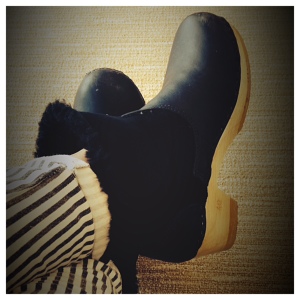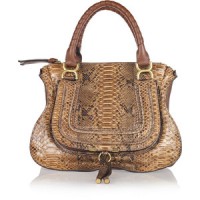I’m not sure how to start this.
Maybe being blunt is best?
My grandmother passed away.
If you are new to this site, you can read in the About page that the reason I’m in the clothing business is because of my grandmother. She was an incredibly talented dressmaker who ran a successful custom clothing business for 50 years. I had the privilege of being taught what looks best on me from an early age and was able to have my dress/skirt/pant/coat/accessory ideas come to life through her.
I have no patience for sewing; so you can double that when it comes to making a garment on a non-electric sewing machine (i.e. using a foot pedal). I’ve made a few things—a summer romper…ok, maybe I’ve only made one thing? I’m drawing a blank on any other ‘creations,’ but I understand HOW pieces SHOULD be correctly made. I know my grandma was a little disappointed that I didn’t pick up her skill, but then again, she didn’t have a huge amount of patience either! (She’d laugh at me and then just rather make it herself.) Regarding the designing aspect, she pretty much gave me free range—within hemline reason. It’s funny because when I look back, we didn’t agree on dress lengths when I was in high school, but then once I graduated college, she started proposing key hole necklines and more revealing backs. (It’s as if she then wanted me to get picked up…then hitched—ha.)
My grandmother was my favorite person. I feel so lucky just to be able to say that—to have had a healthy, strong relationship with a family member. You can’t pick your family and just because you are related does not mean you need to get along or even want to hang out. After college, I moved to Los Angeles and I remember thinking the people I would miss the most would be her and my very little sister. Maybe I thought this because those were the two that I couldn’t communicate with via phone or email, just straight up letters.
Bacia (our Polish slang for grandmother) passed away in September from breast cancer. From the time she ‘officially’ discovered she had the disease, to the time it took her life, it was less than a year. Even before she became sick, the thought of not having Bacia in my life would send me into panic. What would I do without our Saturday afternoons of talking, designing clothes and her feeding me meatballs? And selfishly, who would do my alterations and those of my clients? I didn’t trust the quality of other tailors (and they over-charged). Think about the foundation people in your life; now you understand my feeling. But like all things in life, they are temporary.
When she died, I wanted to announce it to everyone because I was so sad and she was such a special person. I wanted people to know this—but I wasn’t ready. Instead I took a hiatus from writing blog posts. Why is it that the things that make us feel better are often put off to the side during times when we need to do them the most? It makes no sense. At first, I wanted to include images of some of my favorite pieces she’s made—but that would take up way too much space. Then, I wanted to write about her life and the incredibly horrible obstacles she overcame (surviving concentration camps during WWII, coming to America with nothing except her husband and a baby, the riots in Detroit and so on). Bacia was one of those great listeners (even with people to whom she didn’t really care to listen to!). She didn’t like attention or to talk about herself, so making a big fuss about her on my site, though it is relevant, didn’t seem fitting either. So while it may not be the epitome of eulogy-ish writings, I simply want to focus on one old picture.
In this picture, my grandmother is showing off the first pair of women’s pants she ever made. She told me that women started to wear pants in the U.S. so she wanted to make a pair for herself—to test it out. (Which, can you imagine women NOT wearing pants until a certain time? We really don’t realize how many sartorial options American women now have!) My grandfather took the picture.

Photo by: Antoni Piskorowski
Pants were a staple for my grandmother to make for me. In addition to the average 14 weddings per year she would sew (this includes bridesmaids, ring bears etc), she managed to create well-fitting pants for me. A lot of times, especially when I was younger, I really didn’t see why she thought this was so important. I wore a uniform for 12 years to school, and my college garb was in no way polished. But every time she found a ‘good quality’ material, she wanted to make me a pair of pants. Bacia was an elegant dresser. So the cool thing about that was, everything we made (aside from experiments with summer rompers) never went out of style. I had culottes before they were cool, flares that made me look much taller than my actual 5’4 and trousers in materials for each season. (Who doesn’t love a good pair of winter white?)
The awesome thing about owning something in quality material that fits well, is that it stays in your closet for a really long time. So when the trend becomes X, you simply reach in your closet and pull it out (or choose not to, if you aren’t feeling being part of the trend). Fashion does repeat itself, but it’s the way you wear it that changes. How you wore flare jeans 15 years ago is probably (and should be?) different than how you’d pair it now, even if you remained the same size.
If you’ve gotten this far in the reading, thank you. If not, I understand; it’s long! But it feels good to get this out on paper and fill you in on a special person in my life.









































